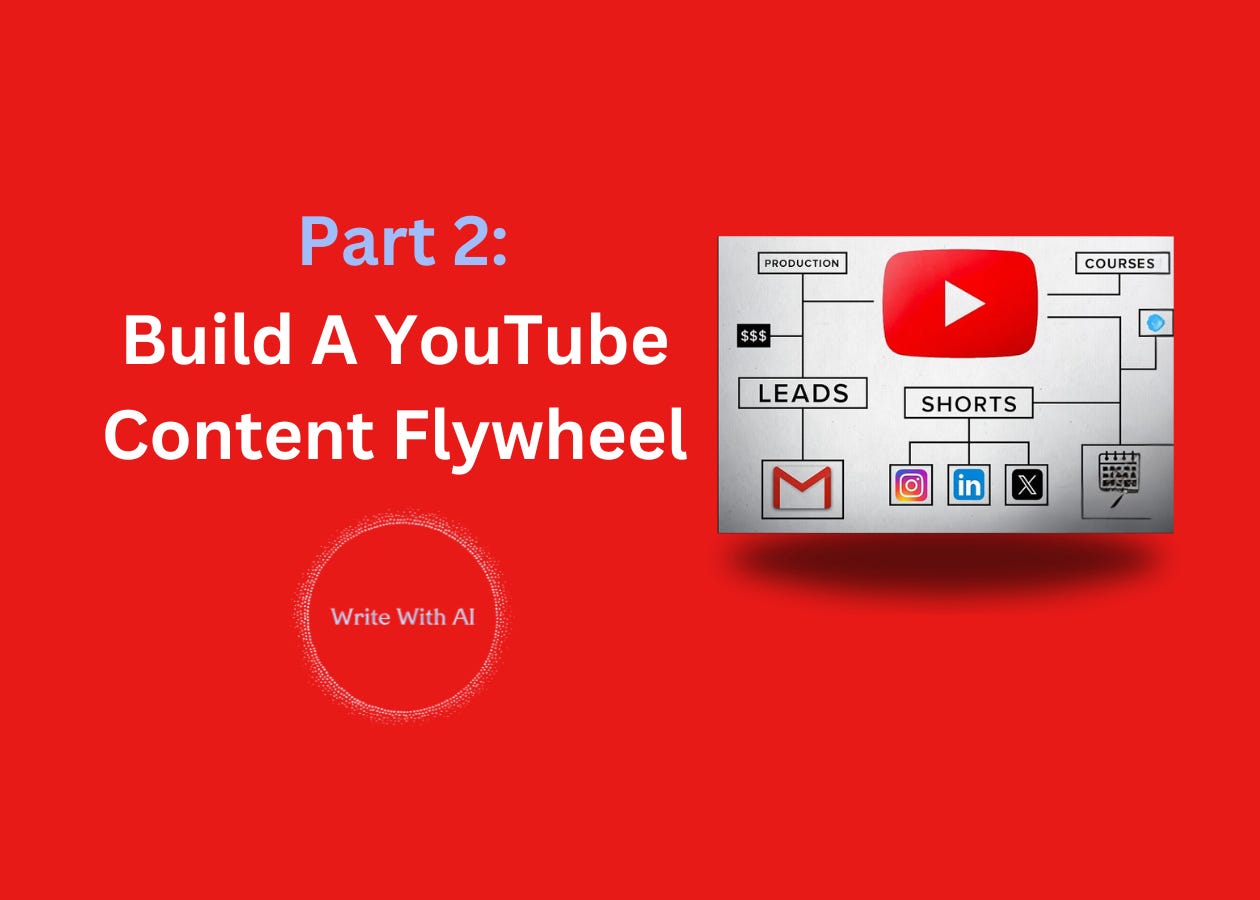Most people treat YouTube like a single-channel platform.
But the smartest creators don't just post—they distribute. Every video you create is 10+ assets that can be clipped, repurposed, and spread across multiple platforms.
This is the secret to consistent audience growth without spending all day filming and editing.
Shorts Are The Secret To Discovery On YouTube
If you’re creating long-form content, you’re already sitting on a goldmine of Shorts.
Here’s why Shorts are key:
Shorts get more reach. YouTube’s algorithm is actively pushing them.
Shorts are fast to produce. All you have to do is clip, what you already recorded.
Shorts help you get reps. The more you publish, the better you get.
The downside?
Shorts alone don’t convert as well as long-form. They get views, but they don’t always turn those views into subscribers or buyers.
Which is why the best strategy isn’t either/or—it’s both. Use Shorts to attract attention, then use long-form to build trust and convert.
This is the essence of the MORE strategy we discussed yesterday.
How To Clip Shorts From Long-Form Videos
If you’re already creating long-form videos, you don’t need to start from scratch.
Clip It. Watch your long-form video and pull out high-energy moments, strong one-liners, or key insights. These are your Shorts.
Repurpose It. Upload those Shorts to YouTube Shorts, Instagram Reels, TikTok, X, and LinkedIn.
Automate It. AI can instantly surface the best clips from your videos (more on this below).
Most people don’t do this. They either only post long-form or only post Shorts.
The best creators do both.
The goal is simple:
Get more mileage out of the work you’ve already done.
Let’s look at a couple examples.
Example #1: The Short Per Main Point Method
If you’re producing educational content, the simplest way to think about cutting a Short from a long-form video is to create 1 Short per main point.
For example, in this long-form video I covered 15 writing tips to become a better writer overnight. So, for each tip, I created 15 corresponding Shorts.
Like this:
This approach requires minimal editing when you plan ahead.
For each point in your long-form video, simply "re-hook" the viewer so you can extract clean clips. Adding graphics and background music is straightforward with most editing software.
Example #2: The Faceless Original Short
With this approach, you extract the script from your long-form video and pair it with completely new visual elements.
This is perfect if you enjoy visual storytelling.
To show you exactly how this works, here's a process I recently used to create a Short from one of our weekly hot seat calls with members of PGA (Premium Ghostwriting Academy):
First, I downloaded the transcript from YouTube and then used this simple AI prompt to summarize the video into the main points: “Please summarize my video transcript in 10 bullet points: [Insert Transcript]”
After I ran the prompt, I scanned the generated bullets for a topic I thought would be useful to my audience.
Then I used this prompt to extract all the relevant talking points.
Next, I asked Claude to turn those talking points into a YouTube Shorts script.
Finally, I used Descript to build the Short. I imported the script and used an AI-generated voice, default music, and a few images from Sora to create my final faceless video.
The first time I did this, it took a few hours from start to finish. But now that I have the process down, I can get it all done in less than an hour.
Note: If you want to give this process a test run, you can use Descript’s custom GPT to generate a video script and create a video on demand.
While the result won't win any awards, it gives you a quick way to experience the workflow and see how the tools integrate. This "training wheels" approach helps you understand the process before investing time in your own content..
How You Can Practice This (Even If You Don’t Have Long-Form Videos Yet)
Many successful creators actually start with Shorts-only and build their way up to longer content.
So, if you’re just starting, don’t let “I don’t have a long-form video” stop you.
You can practice this exact skill by repurposing other people’s content.
Step 1: Find a video in your niche (from a bigger creator).
Step 2: Download the transcript (YouTube auto-generates these).
Step 3: Drop the transcript into ChatGPT and ask: “Find 3-5 key moments from this video that would make great YouTube Shorts. Summarize each in 20-30 words as a Short-form script.”
Step 4: Use those insights to create a curation-style Short—either remixing clips (if allowed) or summarizing the key insight in your own words using a tool like OpusClip.
And if you’re feeling adventurous, don’t be afraid to turn your camera around and record yourself for 30-60 seconds. Read your most popular Note, LinkedIn post, or tweet.
Here is my first Short ever (I even had a bad hair day):
This is how you build your Shorts skill quickly, even before creating long-form content yourself.
You got this! 📈📈📈
What To Do Now
Go back to one of your old videos (or any long-form video in your niche).
Extract 3-5 Shorts from it using the steps above.
Post them on YouTube Shorts, Instagram, or X.
Tomorrow, I’ll show you how to turn all this attention into an actual audience (without selling anything).
Chat soon,
—Dickie & Cole
Co-Founders of Ship 30 For 30
Co-Founders of Premium Ghostwriting Academy
Co-Founders of Typeshare
Co-Founders of Write With AI
PS…What's holding you back from creating your first video?
Drop a comment.
I’d love to know you’re struggling with.





Excuse me, is this still WRITE with AI?
Oh story qi thought it has become "youtube with ai"